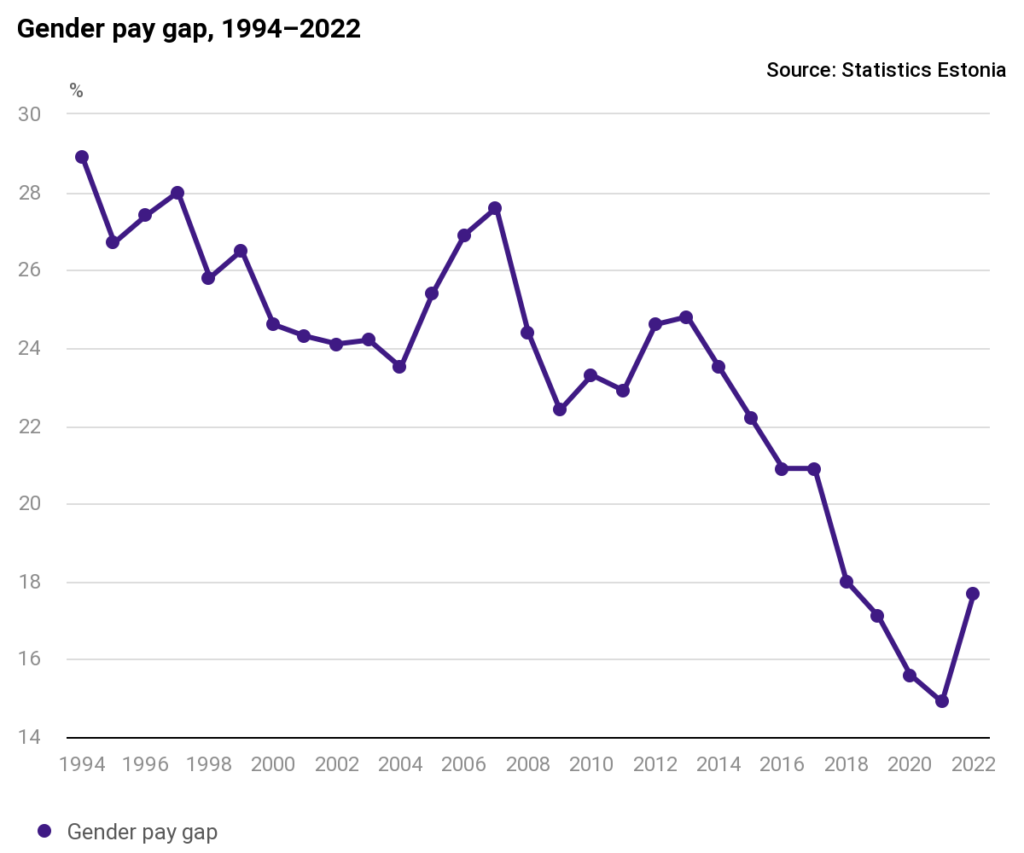Estonia’s gender pay gap widens
Text Mark taylor Photo Amy Hirschi / Unsplash
According to preliminary data released by Statistics Estonia, in 2022, the gross hourly earnings of female employees was 17.7 per cent smaller than that of their male counterparts. The gender pay gap increased by 2.8 percentage points on the previous year. This is the first time it has risen in almost 10 years.
The largest gap between men’s and women’s earnings was recorded in financial and insurance activities (32.9 per cent), followed by wholesale and retail trade (31.6 per cent), other service activities (27.8 per cent), and manufacturing (25.8 per cent). As in 2021, transportation and storage was the only economic activity where women earned more than men, with women’s gross hourly earnings exceeding men’s by 9.3 per cent.

“The gender pay gap in Estonia narrowed by 9.9 percentage points from 2013 to 2021, but widened by 2.8 percentage points in 2022. Compared with 2021, the pay gap decreased the most in construction and increased the most in other service activities,” said Liina Kuusik, an analyst at Statistics Estonia.
The gender pay gap is calculated as the difference between the average gross hourly earnings of male and female employees, and is expressed as a percentage.
To learn more about this and similar topicsEarnings Estonia Female Employees Gender Pay Gap Hourly Wage Pay Gap Salary Statistics Estonia










